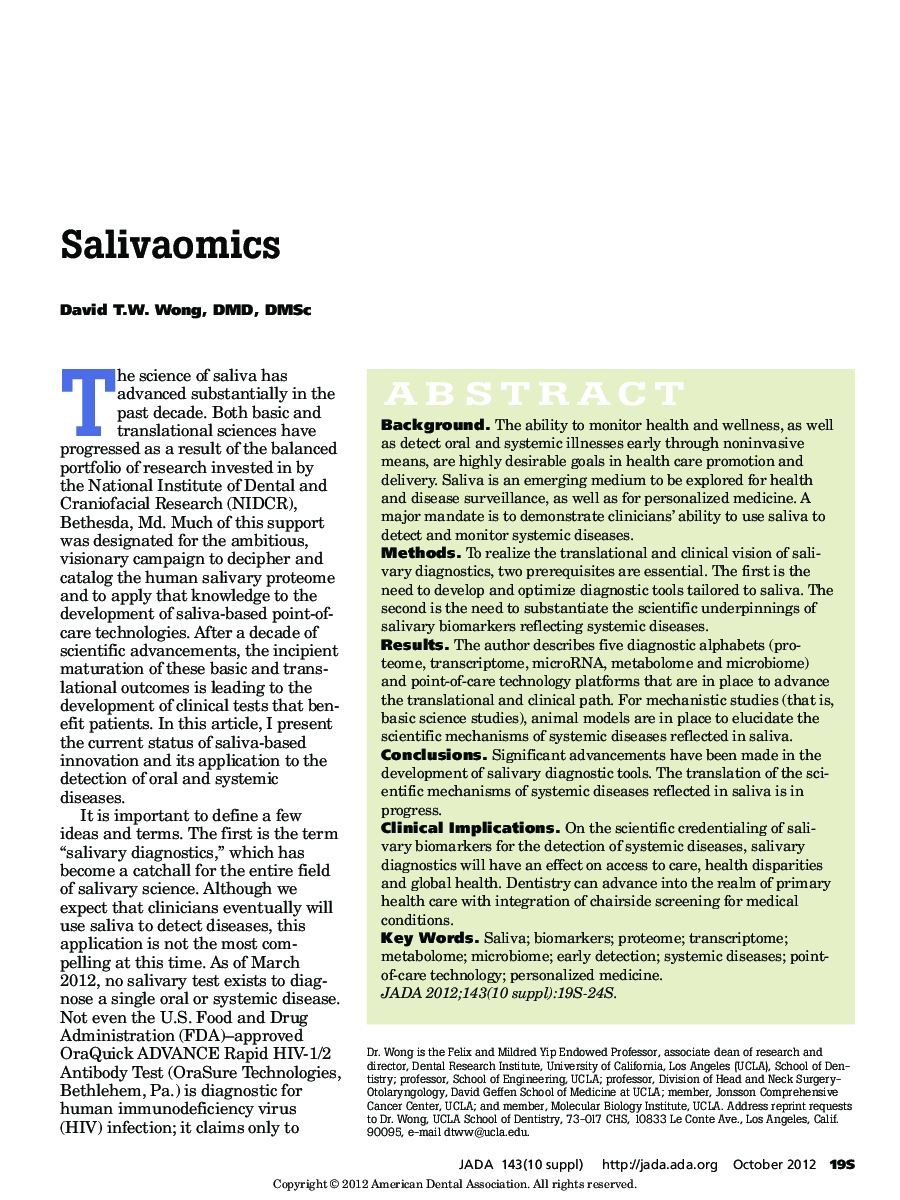| Article ID | Journal | Published Year | Pages | File Type |
|---|---|---|---|---|
| 3138105 | The Journal of the American Dental Association | 2012 | 6 Pages |
ABSTRACTBackgroundThe ability to monitor health and wellness, as well as detect oral and systemic illnesses early through noninvasive means, are highly desirable goals in health care promotion and delivery. Saliva is an emerging medium to be explored for health and disease surveillance, as well as for personalized medicine. A major mandate is to demonstrate clinicians' ability to use saliva to detect and monitor systemic diseases.MethodsTo realize the translational and clinical vision of salivary diagnostics, two prerequisites are essential. The first is the need to develop and optimize diagnostic tools tailored to saliva. The second is the need to substantiate the scientific underpinnings of salivary biomarkers reflecting systemic diseases.ResultsThe author describes five diagnostic alphabets (proteome, transcriptome, microRNA, metabolome and microbiome) and point-of-care technology platforms that are in place to advance the translational and clinical path. For mechanistic studies (that is, basic science studies), animal models are in place to elucidate the scientific mechanisms of systemic diseases reflected in saliva.ConclusionsSignificant advancements have been made in the development of salivary diagnostic tools. The translation of the scientific mechanisms of systemic diseases reflected in saliva is in progress.Clinical ImplicationsOn the scientific credentialing of salivary biomarkers for the detection of systemic diseases, salivary diagnostics will have an effect on access to care, health disparities and global health. Dentistry can advance into the realm of primary health care with integration of chairside screening for medical conditions.
